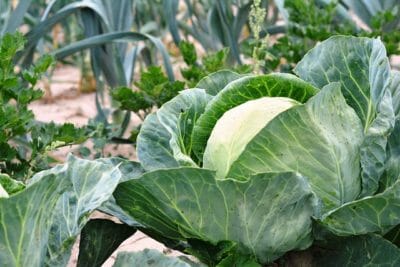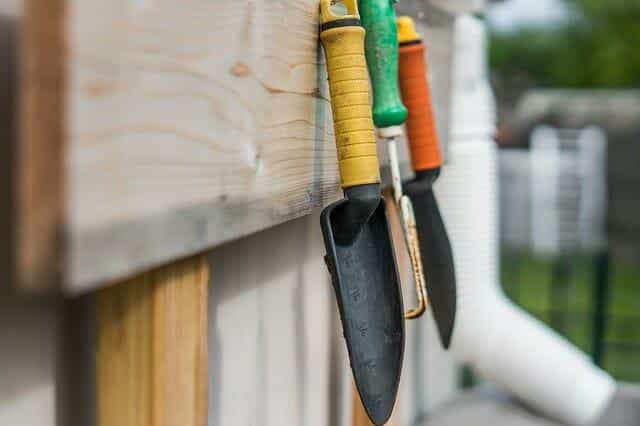If a major disaster were to happen which shut down the food supply chain, I think we’d suddenly find ourselves motivated to make the most of our gardens — and that would start with making our gardens the most that they can be. In other words, turning our entire backyard into a garden.
There’s a difference though, between needing to do something and being ready to do it. Just because we’re going to be motivated to turn our backyards into a huge vegetable garden, doesn’t mean that we’re going to be ready to do so. That transformation is going to take a lot of work and we’re going to need a lot of supplies. If we don’t have them, we’re not going to accomplish much.
This New All-Natural Fertilizer Doubles Garden Production!
So, what are we going to need to turn our little gardens into a much more massive operation?
1. Good Soil
The average home isn’t built on land with outstanding soil, and developers don’t bother bringing in the best topsoil they can find. That’s your job, if you want it. Of course, bringing in enough topsoil to go over your entire backyard and turn it into an excellent garden is a major job, as well as being pretty costly. So, this is something that we will probably avoid. But we should consider what our soil might need to make it better for our gardening (see below). Then we should make sure we have a good stock of it on hand, either piled up in a corner of our yard, or spread across the lawn for the grass to enjoy.
2. Gasoline (if you till)
That not only means having a rototiller sitting in your garden shed, but enough gasoline to run it for a good long while. Gasoline is hard to store, even if you buy the extenders that are available on the market. But if you only store it for a few months, then burn it in your car, it’s not a problem. Then all you have to do is take your gas cans back to the corner station to refill them.
3. Fertilizers
I like to keep things as natural as I can in my garden. That means that most of the time, I prefer to use fish emulsion and compost, both of which you can make yourself. Fish emulsion is probably one of the best fertilizers out there, as it contains all the key nutrients your garden needs. Compost is a great way to make use of the parts of the plants you don’t use, returning the nutrients back to the soil.
4. Edging for raised beds
 I’m a firm believer in raised garden beds, as they are much more efficient and will usually result in greater yields, with less wasted seed. Therefore, my garden is all raised beds. But expanding that to fill my whole back yard? That’s going to take a lot of material.
I’m a firm believer in raised garden beds, as they are much more efficient and will usually result in greater yields, with less wasted seed. Therefore, my garden is all raised beds. But expanding that to fill my whole back yard? That’s going to take a lot of material.
Fortunately, you can use just about anything to edge a raised bed. My stockpile for this is actually a stack of salvaged wood, which came from a number of different places. While not pretty, it was free and will give me a start on getting my new beds in place. I’ll probably have to replace it a couple of years later, as it rots, but that’s something I can think of when the time comes.
5. Means of watering
Everyone thinks that water will be at a premium in the wake of a disaster. This means that watering your garden is going to be a challenge, unless you live in an area where it rains enough to eliminate the need for watering. I don’t happen to live in such a place.
Since there will be no water pressure, sprinklers won’t work at all; so that plan is out. Besides, sprinklers are notoriously wasteful of water, something that you’ll want to avoid. Your best bet is to either use underground soaker hoses or drip sprinklers. Run off a small pump, these will provide water directly to your plants, without wasting any.
Interestingly enough, drip irrigation was developed by the Israelis, who needed something that could be used in a desert environment. Since most of Israel’s water comes from seawater desalination, they can’t afford to waste it, spraying it into the air. Drip irrigation allows them to put the water right where it’s needed, getting the most out of it.
6. Insecticides (organic preferably)
The last thing you’ll need to see happening to your garden is insects eating it up, destroying all your hard work and denying your family the food it needs. So you’d better have a good stock of insecticides on hand.
While I seriously doubt that there will be a run on your local garden center after a disaster hits, there won’t be any more shipments, restocking them. So what you stock will be all that you have. So it would be a good idea to find natural recipes for your own insecticides, as well.
7. Seeds, lots of seeds
It’s going to take a huge amount of seed to get your garden going in a large scale like that. So you’ll need to stock up heavily on seed. I recommended making a drawing of your garden earlier. This is the other purpose for it. You can use that drawing to plan what you’re going to plant where, and figure out how much seed you’ll need.
Buy only heirloom seeds for your survival garden, as they are the only ones which will allow you to harvest the seeds and replant the next year. GMOs and hybrids won’t give you seeds that will produce the same plants. Freezing your seed allows it to keep longer, so that you won’t lose that investment while waiting until you need it.
What would you add to our list? Share your thoughts in the section below:
 Off The Grid News Better Ideas For Off The Grid Living
Off The Grid News Better Ideas For Off The Grid Living




